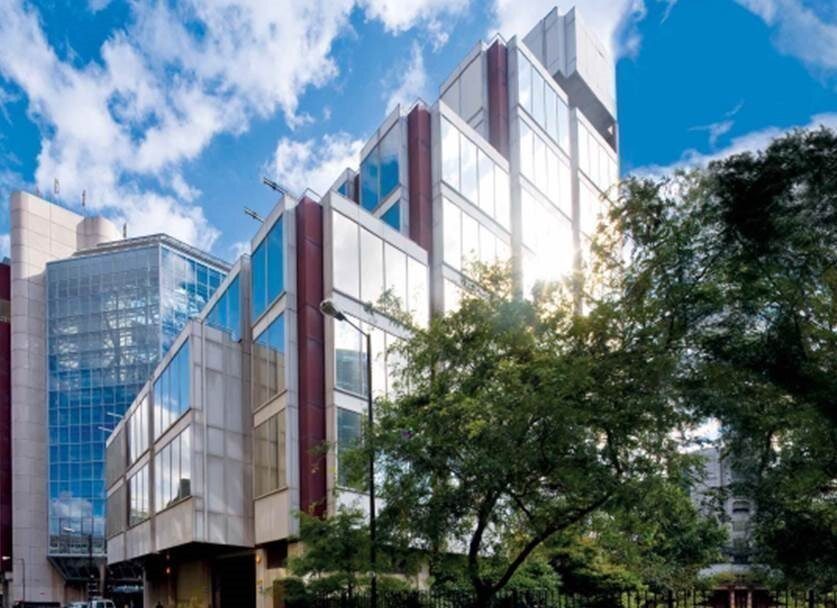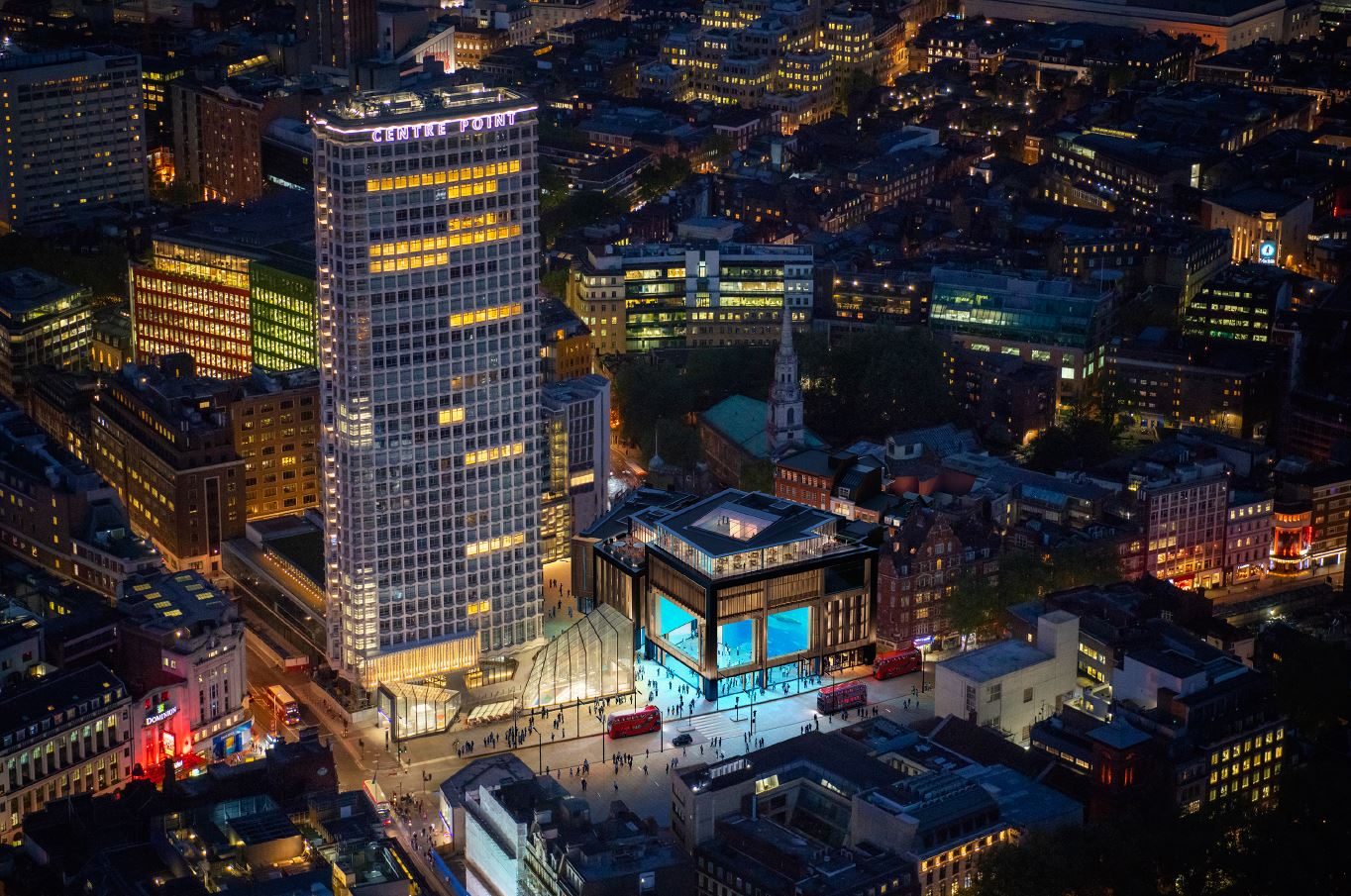Company founder believes interest rates and inflation will continue to rise as governments repeat past mistakes
by James Buckley
It’s fair to say that Anacott Capital, the London-based real estate firm, doesn’t like to be pigeon-holed. One minute a principal investor and asset manager, the next a capital arranger, the firm’s deliberately nimble approach allows it to pounce on opportunities whenever they present themselves.
The naturally press-shy firm prefers to do its deals under the radar. But you can’t carry out the biggest single-asset financing in London – as Anacott did last year – without someone taking note.
React News spoke to the company’s founder and managing director James Lapushner to find out where it’s going from here.
Anacott sold City office development Lloyds Chambers for £97m in 2018 having bought it for £64.5m four years earlier. Are you seeing any value-add opportunities in the London office market currently with similar potential for growth?
Lloyds Chambers was a great transaction because it was symbolic of our fundamental pillars for investing: Attractive basis, strong location, and asset management opportunities. There was limited competition for Lloyds Chambers because we were very contrarian in our thinking compared to the rest of the market at the time.
We acquired Lloyds Chambers after the global financial crises, and nobody believed in City office buildings catering towards the financial sector. In addition, our competition viewed Lloyds Chambers as a fringe location and only wanted to convert it to residential or student accommodation, and we believed in the location due to the excellent infrastructure and strong neighbouring office occupiers.
We were also lucky because a large US private equity group had Lloyds Chambers under offer prior to us, and materially retraded the deal because its New York investment committee felt that they could. As a side note, the same group offered mezzanine financing to our buyer several years ago and materially retraded them as well.
Accordingly, we had a contrarian view versus the market and were therefore able to buy the asset at an attractive basis translating into an 11% current yield and £350/sq ft. Of course, it is easy to say that it was an obvious great buy in hindsight; however, it was very difficult to arrange the capital structure at the time, and our competition told everyone that we didn’t know what we were doing.

The main problem with being a contrarian is that capital is limited because it is a lot easier for capital partners to follow the crowd instead of engaging in independent critical thinking.
Finally, we also look for asset management opportunities to enhance the returns and protect the downside. I want to make one point very clear: I believe that at least 80% of the profit on deals is on the buy. Although asset management is important, you can never recover from overpaying.
Lloyds Chambers was entering the end of its lifecycle, with an opportunity to reposition and increase the massing. Once again, the market thought that we would only be able to achieve a massing increase of 25%. However, we achieved a planning permission increase of over 100%, from 193,000 sq ft to 400,000 sq ft.
Although we initially planned to redevelop the asset, we saw a negative shift in the London office market and decided to sell instead, and leave the redevelopment upside to the next buyer.
To make a long story short, we successfully exited, achieved an approximate 40% IRR and a 4x equity multiple, post fees and post-tax.
Unfortunately, we are not seeing the same opportunities in the London office market mainly for one reason: unlimited liquidity that was raised at the start of the pandemic to invest into distressed office assets. Of course, there is no distress if every fund is bidding on the same assets and injecting enormous liquidity into the market.
You’ve been bidding on UK shopping centre assets – most recently County Mall Crawley – following sharp declines in retail values. Do you still see value in the sector, and do you believe values will fall further?
In 2019, we made a strategic decision to pursue UK shopping centres because there was almost no appetite for UK shopping centres due to the large losses suffered by large institutional investors, including well publicised examples at Blackstone (St Enoch), Orion (Hammerson Retail Parks) and numerous other private equity groups.
As we started examining shopping centres we noticed that owners were still unrealistic about their values and were desperately holding onto the hope that the market would provide some form of recovery, and that they would not have to come to terms with the reality of no new material leasing, further occupier defaults, large service charges and business rates that new occupiers and landlords could not afford, a large capital expenditure bill for works to modernise and reposition their assets, and negative NOI.

In addition, the lack of debt and equity liquidity provided further pressure on prices. Although we agreed to a joint venture with a US equity partner, finding debt proved to be even more challenging and debt returns started at 12% for low leverage financing, which meant that we were looking at using 100% equity to fund our acquisitions.
We agreed to acquire the County Mall Crawley in April 2020 with the understanding that the purchase price would be reduced by a proportionate reduction in NOI during the lockdown. Although the vendor had reduced the price by 80% from their original cost basis, they were not willing to reduce the price by another 5% to make the deal work, so we walked away from the acquisition in January 2021.
In hindsight, we are happy with our decision because shopping centre repositioning and redevelopment takes a lot of stamina and hard work that could be used more efficiently for less management intensive opportunities. Accordingly, it is better to be patient and wait for the next opportunity if it is not possible to buy the asset at the basis that you find attractive.
Patience is a rare trait in our industry today because everyone is playing with other people’s money and need assets under management to cover their large cost structures.
Consequently, the investing industry always goes through a cycle of gambling, sometimes called greed and today called FOMO, versus disciplined investing, and we are currently at the gambling side of the spectrum.
We have yet to see an attractive opportunity in the shopping centre space, but we also have confidence that it is coming.
Did Anacott look for any operational partners for County Mall Crawley and, if so, who, why and how?
After making the decision to target shopping centre acquisitions, we interviewed some of the best-known retail asset managers in the UK. We thought that a retail asset manager could add value based on their experience in the market and agreed to a joint venture with one of those managers.
We quickly ended our partnership and learned several key lessons. Although the UK retail market had changed drastically, retail asset managers had not yet repurposed themselves by 2021. We wanted to achieve the best price possible on our acquisitions while our retail asset management partner wanted to grow their assets under management with minimal or no risk to themselves and were more concerned with their reputation with agents and sellers than achieving the best price.
All of the large UK retail asset managers also had numerous failed legacy assets that they convinced their capital partners to acquire during the last 10 years. Accordingly, these asset managers continued to work out their legacy assets and also had a legacy mindset. Despite their repeated failures, these same asset managers still kept getting hired by private equity groups. Accordingly, we saw the experience as an opportunity to build a new platform instead of relying on the same organisations that failed in the past.
Where do you see the most distress in the UK commercial property markets currently and will this create an opportunity for Anacott?
Currently there is limited to no distress in the UK market and no distress on the continent. Of course, I am speaking very broadly and there are always outliers and deals to do.
However, I have a very strong conviction that the market dynamics will materially change in the near term and will impact all asset classes.
My thesis is based on the failed government policies of dealing with the global financial crisis of 2007 through quantitative easing instead of difficult policy changes that should have appropriately punished the responsible risk takers.

Instead, the global policy of quantitative easing resulted in rewarding risk takers that should have been wiped out and created the largest redistribution of wealth from the middle class to the rich in the last century.
The impacted middle class, which effectively became poorer, has also become radicalised, which has created political divisiveness across all democracies. Moreover, governments have become addicted to even more quantitative easing for resolving all of their political and economic issues over the last 13 years.
The reliance on quantitative easing is now leading to real inflation of 15+% and wage inflation has yet to start even though we have a broken labour market.
Although the government is showing inflation at 5+%, which is already a number that would have never been tolerated, I believe that the real inflation growth rate is materially higher based on my discussions with SMEs.
Therefore, the inflation rate will continue to grow at these large double-digit numbers in the western economies for the medium term and will have a disproportionately larger impact on the remnants of the middle class. Consequently, central banks will be forced to increase interest rates at a higher rate and at a faster velocity than they are currently projecting.
In addition, we are also living in a world where countries are becoming more isolated due to the divisiveness created through quantitative easing. This divisiveness will also lead to further trade barriers and economic conflict between countries.
Therefore, I believe that we are still in the global financial crises that commenced in 2007, and that there will be a material impact on the real estate sector in the near to medium term.
This is the time to be patient.
Anacott arranged the £445m refinancing of Consolidated Developments’ St Giles District and Outernet scheme in December in what was the biggest single-asset UK financing of 2021. How broad was the pool of lenders willing to write a ticket of that size and what does this say about the state of the UK lending markets currently?
Although liquidity is unlimited today, the risk appetite of lenders is limited because the financial system is designed to make it easier to follow the crowd instead of investing time and effort into understanding new concepts.
We always knew at the outset that there would only be three to five lenders that would be competitive in providing financing. We already had the experience of arranging and structuring the construction financing that we placed with Blackstone and Goldman Sachs five years ago.

The goal with large assets such as St Giles is to identify the right lender that is willing invest time and effort to thoughtfully and intelligently understand the risks and mitigants in order to provide the sponsor with a tailored solution that simultaneously works for the capital providers.
The UK lending market is strong in many respects. The market is very liquid for the standard assets such as BTR, warehouses, and long let assets. In addition, there is also liquidity for more unique assets if you can understand and explain the risks and mitigants that credit committees will focus on.
How do you see the dynamics within the lending markets evolving with regard to interest rate rises and the knock-on effect this will have for investors servicing debt on existing assets and those looking to underwrite new purchases?
As I stated earlier, I believe that we are going into a future where consumer price inflation will rise much faster than expected which will also cause a faster rise in interest rates. We all know the general impact of interest rates on real estate as we already witnessed huge asset inflation during the last 15 years due to unprecedented low interest rates.
Despite the rise in interest rates, I also believe that the UK lending market is the most resilient in Europe due to the relatively low leverage and high coupons for real estate debt, especially when compared to the German lending market.
Although there are still many unknowns especially after seeing how quickly liquidity tends to drain from the market due to contagions, I believe properties with the best locations and the best designs and materials for the requirements of the future will always outperform due to flight to quality during periods of change.
A friend of mine recently challenged me to state that inflation should be good for real estate values. My response is that we already had asset inflation for the last 15 years. Now we will have cost inflation, which will result in diminishing profitability for businesses, material economic pressure for consumers and asset deflation. The only exception to this is for markets that have not seen asset inflation during the last 5-10 years and have an influx of foreign capital.
What can we expect from Anacott in 2022?
I have shared my views with several people during the last year and everyone just thinks I am a killjoy. However, I feel very excited about 2022 and the future. Despite accepting the new realities of the future that have already started to present themselves, it is also important to be positive and to look forward to the new opportunities that these changes will present. As with all change, there are new winners and losers.
I believe that 2022 is a time to prepare for the upcoming changes and to get ready to invest in special situations. In addition to looking for distress, I believe that the growth industry in real estate is where companies can successfully combine technology and real estate, and the virtual with the real.
There are a lot of charlatans who try to sell that story by marketing key words to their audience but very few of them can deliver the right product.
